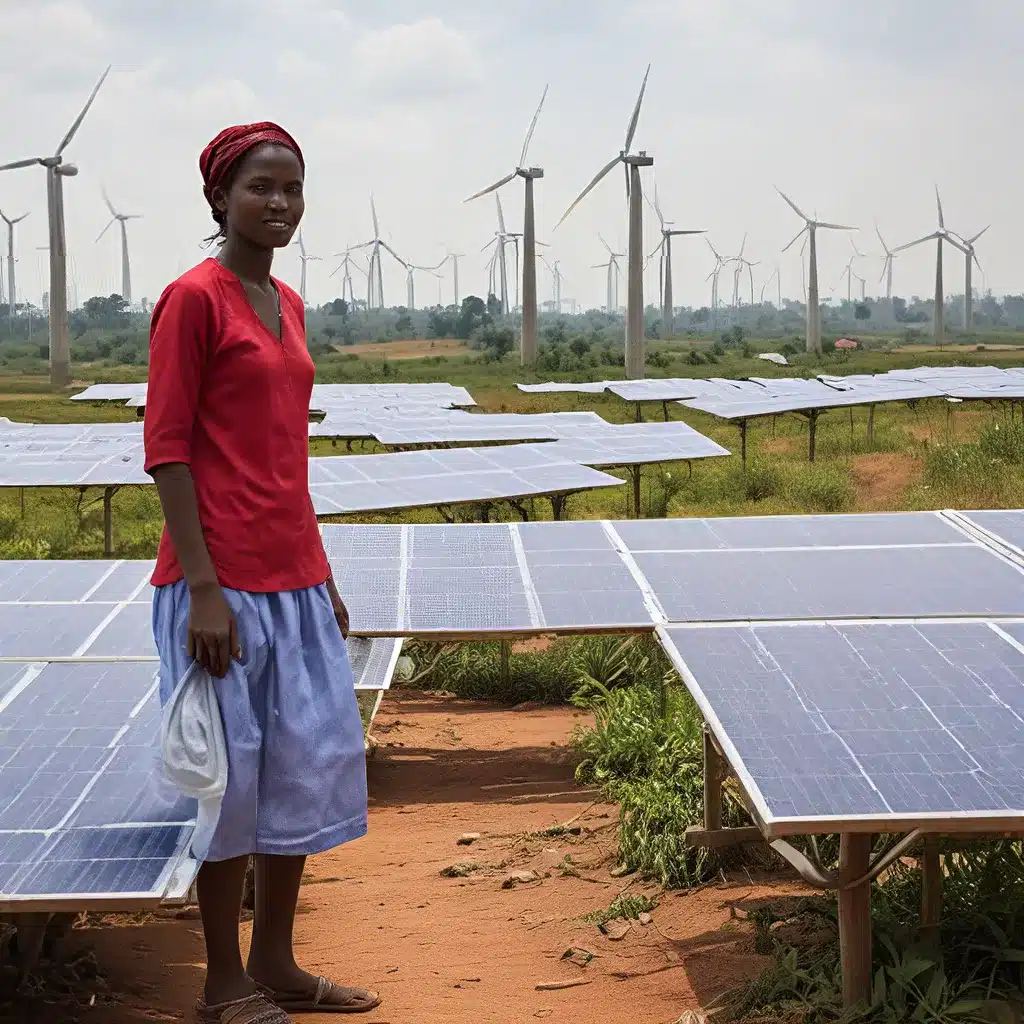
The Renewable Energy Tripling Challenge
The world is at a critical juncture when it comes to renewable energy. At the recent COP28 climate conference in Dubai, more than 130 national governments, including the EU, agreed to work towards tripling the world’s installed renewable energy capacity to at least 11,000 gigawatts (GW) by 2030. This is an ambitious target, and one that will require a monumental effort to achieve.
As someone who’s deeply passionate about renewable energy, I’ve been closely following the developments in this space. The recent report from the International Energy Agency (IEA) paints a sobering picture – most countries need to accelerate their renewable energy efforts rapidly to meet their commitments. And this is where the real challenge lies, particularly in the developing world.
You see, the path to a sustainable energy future isn’t a straight, smooth road. It’s a winding, bumpy journey filled with obstacles and detours. And in the developing world, these obstacles can be even more daunting.
Renewable Energy Challenges in the Developing World
Think about it – many developing countries are still grappling with basic infrastructure challenges, like reliable access to electricity. Millions of people in these regions live off the grid, relying on polluting and inefficient sources of energy like kerosene lamps or diesel generators. Bridging this energy access gap is a crucial first step before we can even begin to tackle the loftier goal of transitioning to renewable energy.
The World Bank has highlighted the need to better integrate the transport and energy sectors to achieve sustainable mobility in developing countries. This is no easy feat, as it requires coordination and investment across multiple industries and government agencies.
But even for those developing countries that have made progress in energy access, there’s another hurdle to overcome: the cost and affordability of renewable energy technologies. Solar panels, wind turbines, and energy storage solutions can still be prohibitively expensive for many low-income communities. Bridging this cost gap is crucial to driving wider adoption of renewable energy.
And let’s not forget the challenge of infrastructure and grid integration. Developing countries often lack the robust, modern electricity grids required to effectively integrate large-scale renewable energy projects. Upgrading and modernizing these grids is a massive undertaking, both in terms of time and resources.
Innovative Financing Solutions
Now, I know what you’re thinking – this all sounds pretty daunting, doesn’t it? But you know what they say, where there’s a will, there’s a way. And in the world of renewable energy, there are some truly innovative financing solutions emerging that are helping to bridge these gaps.
Blended finance, for example, is a strategic approach that combines public and private capital to catalyze investments in renewable energy projects. By leveraging public funds and de-risking investments, blended finance can help make renewable energy more accessible and affordable for developing countries.
And speaking of affordability, microfinancing schemes are also proving to be a game-changer. These small-scale loans are empowering individuals and communities in the developing world to invest in their own renewable energy solutions, whether it’s a solar home system or a community-owned mini-grid.
But it’s not just about the money – we also need to address the knowledge and capacity gaps that exist in many developing countries. That’s why you’re seeing a growing focus on training, education, and technical assistance programs to equip local communities with the skills and expertise they need to manage and maintain their renewable energy systems.
The Role of Renewable Energy Markets and Trading
Now, I know what you’re thinking – all of this sounds great, but how do we actually make it happen? Well, that’s where the power of renewable energy markets and trading comes into play.
You see, by creating well-functioning, transparent markets for renewable energy, we can help drive more investment and adoption in the developing world. These markets can facilitate the equitable distribution of renewable energy resources, ensuring that even the most remote communities have access to clean, affordable power.
And when it comes to trading, the interconnection of regional grids and the development of cross-border renewable energy trade can be a game-changer. It allows developing countries to leverage their unique renewable energy resources, whether it’s abundant solar in the Sahara or geothermal power in East Africa, and tap into a wider regional market.
But it’s not just about the economic benefits – renewable energy trading can also foster greater cooperation and integration between countries, breaking down barriers and promoting sustainable development on a regional scale.
The Path Forward: Collaboration and Innovation
So, where do we go from here? Well, the answer is clear – we need to work together, across borders and sectors, to tackle these challenges head-on.
Governments, businesses, and civil society organizations all have a vital role to play. We need to forge new partnerships, unlock innovative financing, and invest in capacity-building to help developing countries leapfrog the fossil fuel era and embrace a sustainable energy future.
And let’s not forget about the power of technological innovation. From advanced battery storage solutions to smart grid technologies, there’s a whole world of exciting new developments that can help bridge the renewable energy gap in the developing world.
Frankly, I’m excited about the possibilities. Because when we combine our collective ingenuity, resources, and determination, there’s no limit to what we can achieve. This is our chance to rewrite the energy narrative, to create a more equitable, sustainable world for all.
So, what are we waiting for? Let’s get to work, shall we? And if you’re interested in exploring how Firewinder can help support your renewable energy journey, I’d be more than happy to chat.

